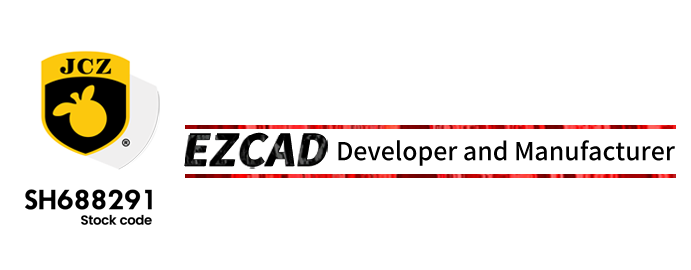Fiber lasers have become a cornerstone in modern laser technology, particularly in the field of metal marking. The advanced capabilities of fiber lasers provide precise, efficient, and durable solutions for a range of applications. In this article, we will delve into the features and benefits of fiber lasers, explore their role in metal marking, and discuss how they compare to other types of laser marking machines.
Understanding Fiber Lasers
Fiber lasers represent a significant advancement in laser technology, utilizing optical fibers doped with rare-earth elements like ytterbium, neodymium, or erbium as the laser medium. This technology offers numerous advantages over traditional lasers, including higher efficiency, greater beam quality, and a longer operational life.
How Fiber Lasers Work
Fiber lasers operate by passing a pump laser through a fiber-optic cable that has been doped with a rare-earth element. The pump light excites the dopant atoms, which then emit coherent light in the form of a laser beam. This beam is characterized by its high beam quality and stability, which are essential for precision tasks.
Advantages of Fiber Lasers
- Efficiency: Fiber lasers are known for their high energy efficiency compared to other laser types. This efficiency translates into lower operational costs and reduced energy consumption.
- Beam Quality: The beam produced by fiber lasers is highly focused and has a small spot size, making it ideal for precision applications like metal marking.
- Durability: Fiber lasers are robust and require minimal maintenance. Their solid-state design eliminates the need for complex cooling systems and reduces the likelihood of mechanical failure.
- Versatility: Fiber lasers can be used for a wide range of materials, including metals, plastics, and ceramics, making them a versatile tool in various industries.
Fiber Lasers in Metal Marking
Fiber lasers are particularly well-suited for metal marking applications due to their precision and efficiency. A laser marking machine for metal equipped with a fiber laser can deliver high-quality, permanent markings with exceptional detail.
Applications of Fiber Lasers for Metal Marking
- Industrial Identification: Fiber lasers are widely used for marking industrial components with serial numbers, barcodes, QR codes, and logos. The high contrast and durability of fiber laser markings ensure that these identifiers remain legible throughout the lifespan of the component.
- Customization: Fiber lasers allow for intricate and customized designs on metal products. This capability is valuable for creating personalized items, promotional products, and bespoke components.
- Traceability: In industries where traceability is critical, such as aerospace and automotive, fiber lasers provide reliable and permanent markings that aid in tracking and quality control.
Benefits of Fiber Laser Engravers
- High Precision: Fiber laser engravers are capable of achieving extremely fine details and small font sizes. This precision is essential for applications that require detailed logos, text, or patterns.
- Speed: Fiber laser marking machines for metal operate at high speeds, allowing for efficient production processes. This speed is particularly beneficial in high-volume manufacturing environments.
- Low Heat Input: The focused beam of a fiber laser minimizes the heat-affected zone (HAZ), reducing the risk of thermal distortion or damage to the surrounding material.
Comparing Fiber Lasers to Other Laser Technologies
When choosing a laser marking machine for metal, it’s important to compare fiber lasers with other types of lasers, such as CO2 and YAG lasers. Each laser technology has its strengths and limitations.
Fiber Lasers vs. CO2 Lasers
CO2 lasers are known for their ability to mark non-metallic materials such as wood, glass, and plastics. However, they are less effective on metals compared to fiber lasers. Fiber lasers offer higher precision and better performance for metal marking, making them the preferred choice for industrial applications.
Fiber Lasers vs. YAG Lasers
YAG lasers, specifically Nd
lasers, have been used in metal marking for many years. While they offer good performance, fiber lasers have surpassed them in terms of efficiency, maintenance requirements, and beam quality. Fiber lasers provide a more cost-effective and versatile solution for metal marking applications.
Future Trends in Fiber Laser Technology
As technology continues to advance, fiber lasers are expected to see further improvements in performance and capabilities. Innovations may include enhanced beam quality, increased power outputs, and more compact designs. These advancements will continue to expand the applications of fiber lasers and solidify their role in modern manufacturing and marking processes.
Conclusion
Fiber lasers have established themselves as a leading technology in the field of metal marking. Their precision, efficiency, and versatility make them an excellent choice for a wide range of applications. Whether for industrial identification, customization, or traceability, fiber laser marking machines offer superior performance and durability. As technology evolves, fiber lasers will likely continue to be a vital tool in various industries, providing innovative solutions for marking and engraving tasks.
由用户投稿整理稿件发布,不代表本站观点及观点,进行交流学习之用,如涉及版权等问题,请随时联系我们(yangmei@bjjcz.com),我们将在第一时间给予处理。
Post time: Sep-05-2024








